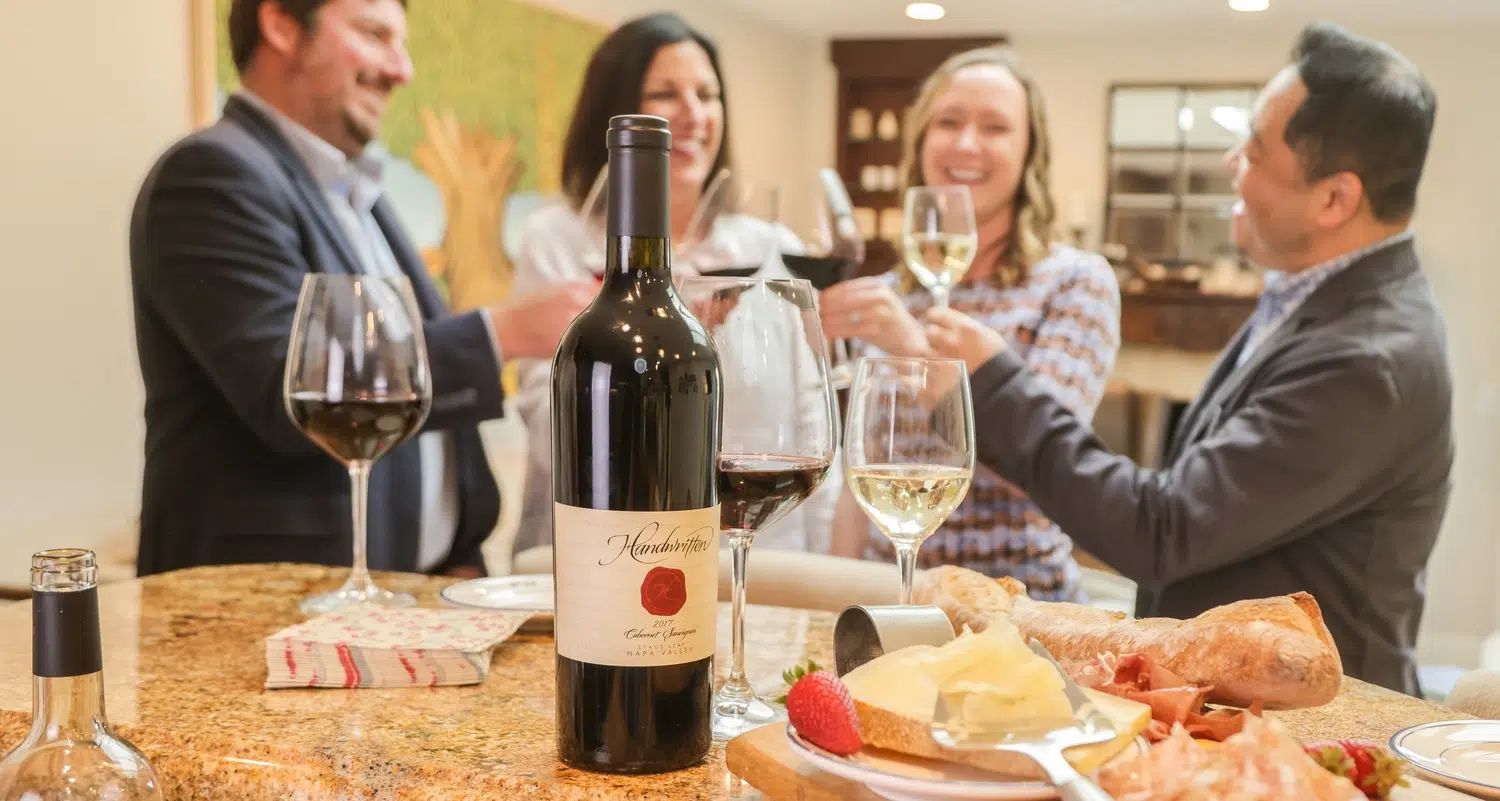The Story Behind the Label: How Do Wines Get Their Names?
Walk into any wine shop or browse the shelves of a boutique winery, and you’ll encounter a fascinating tapestry of names that range from the poetic to the profound, the whimsical to the deeply personal. Understanding how do wines get their names reveals the artistry, tradition, and intention that boutique wines carry from conception to cork.
These names are never arbitrary; they emerge from a complex interplay of heritage, creativity, and wine marketing strategies that connect the liquid within to the land, the maker, and the moment of creation.
Why Wine Names Matter to Consumers
The psychology of wine naming extends far beyond mere identification. When a consumer reaches for a bottle, the name serves as the first conversation between winemaker and drinker—a preview of the experience that awaits. Research in wine psychology demonstrates that names influence perception, expectation, and even the sensory experience of tasting.
Creative wine names function as emotional anchors, creating immediate associations that can transport a taster to specific moments or feelings. A name like “Midnight Harvest” evokes cool vineyard nights and traditional winemaking romance, while “Philosopher’s Stone” suggests the magical transformation of grape to wine.
For boutique wineries, names carry additional weight. Unlike mass-produced wines that rely on brand recognition, small-production wines must communicate their unique character through every element of presentation. The name becomes a distillation of the wine’s essence.
The History Behind Naming Conventions
Wine naming traditions stretch back millennia, rooted in the fundamental human need to categorize and commemorate. The earliest wines were often named for their geographic origins—a practice that continues today with appellation-controlled wines that bear the names of their birthplace.
In medieval Europe, wines were frequently named after the monasteries that produced them, with monks serving as both winemakers and record-keepers. These ecclesiastical names carried connotations of purity, tradition, and spiritual significance that elevated the wine beyond mere beverage to something approaching the sacred.
The Renaissance period saw the emergence of more creative naming conventions, as noble families began attaching their names and heraldry to their wines. This practice established the connection between winemaking and personal legacy—a tradition that continues in modern family-owned wineries where names reflect generational commitment to the craft.
The New World brought liberation from Old World conventions, allowing winemakers to explore imaginative approaches to naming that reflected local landscape, indigenous culture, and personal philosophy rather than strict geographical designation.
Creative Wine Names: From Whimsy to Heritage
Modern wine naming represents a spectrum of approaches. At one end, you find wines with playful, approachable names designed to demystify wine culture. At the other end lie wines with names steeped in tradition, family history, and reverence for the land.
Boutique wines frequently occupy the middle ground, where creativity meets craftsmanship. These names often reflect the winemaker’s personal journey, the vineyard’s unique characteristics, or the philosophical approach that defines the producer.
How Culture and Region Influence Wine Naming
Regional culture profoundly shapes wine naming conventions. Mediterranean wine regions often favor names reflecting ancient traditions, with many wines bearing names unchanged for centuries. These connect contemporary bottles to historical continuity.
New World regions embrace innovation and personal expression. California’s Napa Valley has become known for wine marketing strategies that emphasize individual vineyard sites, specific winemaker philosophies, and unique terroir expressions.
The Role of Storytelling in Crafting Wine Names
Modern wine naming increasingly relies on narrative construction—creating compelling stories that give context and meaning to the wine experience. Effective wine names serve as story prompts, providing enough information to spark curiosity while leaving room for personal interpretation.
This storytelling approach has transformed wine marketing strategies, moving away from technical descriptions toward more emotionally resonant communication.
Wine Label Design Inspiration & Visual Storytelling
The relationship between wine names and wine label inspiration represents a crucial element of contemporary wine marketing. Names must work in harmony with visual design to create cohesive brand experiences that communicate the wine’s character across multiple sensory channels.
Typography becomes a critical consideration, as the visual presentation of the name affects its perceived meaning. A name rendered in elegant script suggests refinement and tradition, while bold, contemporary fonts convey innovation and modernity. The physical placement of the name on the label, its size relative to other elements, and its relationship to imagery all contribute to the overall narrative.
Color psychology plays a significant role in how names are perceived. Deep, rich colors might enhance names that suggest intensity or complexity, while lighter, more delicate hues support names that emphasize elegance or subtlety. The interaction between name and color creates subliminal associations that influence consumer perception before the first sip.
Labels That Come to Life: A Marketing Evolution
The concept of a wine label that comes to life represents the evolution of wine marketing from static presentation to dynamic storytelling. Modern wine labels increasingly incorporate elements that change, reveal, or interact with the consumer, creating memorable experiences that extend beyond the wine itself.
This evolution reflects changing consumer expectations about brand engagement. Contemporary wine drinkers, particularly younger demographics, expect brands to provide experiences rather than simple products. Names that can support interactive elements, social media engagement, or augmented reality experiences gain competitive advantages in crowded markets.
The integration of technology with traditional wine naming creates new possibilities for storytelling. Names can become entry points for digital experiences, connecting consumers to vineyard tours, winemaker interviews, or educational content that deepens their understanding of the wine’s origin and character.
How Boutique Brands Use Story-Driven Marketing
Boutique wines leverage story-driven marketing more effectively than larger producers because their smaller scale allows for intimate, personal narratives. Names become vehicles for sharing the winemaker’s passion and the vineyard’s unique characteristics.
These strategies recognize that boutique wine consumers seek authenticity and connection. Names reflecting genuine stories—family heritage, vineyard discovery, or winemaking philosophy—resonate more deeply than manufactured marketing messages.
For those seeking to experience this authentic approach to winemaking, exploring curated tastings at boutique wineries provides insight into how thoughtful naming connects to exceptional wine quality.
The Meaning Behind Handwritten Wines
Understanding how wines get their names becomes particularly meaningful when examining the philosophy behind Handwritten Wines. Founded in 2009, the winery chose its name to honor the intimate, personal nature of handwritten communication—the way a handwritten note carries the writer’s individual character, intention, and emotion.
The name “Handwritten” reflects the winery’s commitment to handcrafted production methods and personal attention to detail. Just as each person’s handwriting is unique, each wine and vintage carries its own distinct character, shaped by the specific conditions of its creation. The name suggests both the artisanal nature of the winemaking process and the personal connection between producer and consumer.
This naming philosophy extends to the winery’s approach to wine marketing strategies, where every element of the brand experience reinforces the themes of authenticity, craftsmanship, and personal connection. The name becomes a promise—that each bottle contains not just wine, but a personal expression of place, time, and intention.
The literary inspiration behind Handwritten Wines’ name also connects to the broader tradition of wine as a cultural artifact. Like literature, wine carries meaning beyond its immediate function, serving as a vehicle for sharing stories, preserving memories, and creating connections between people across time and space.
Through their thoughtful approach to naming and branding, Handwritten Wines demonstrates how boutique wines can use their names to communicate deeper values about craftsmanship, authenticity, and the artisanal tradition. The name becomes both description and aspiration—a reminder that the best wines, like the best writing, emerge from careful attention to craft and genuine commitment to excellence.
For wine enthusiasts interested in experiencing this philosophy firsthand, Handwritten Wines’ collection offers an opportunity to taste how thoughtful naming translates into exceptional wine quality.
The story behind wine names reveals the complex relationship between language, culture, and craft that defines the modern wine industry. From traditional geographic designations to innovative creative wine names that push boundaries, each naming decision reflects the winemaker’s values, the wine’s character, and the intended relationship with consumers. Understanding this process enhances appreciation for the artistry that extends from vineyard to bottle, from grape to glass, and from producer to the stories we tell around the table.

